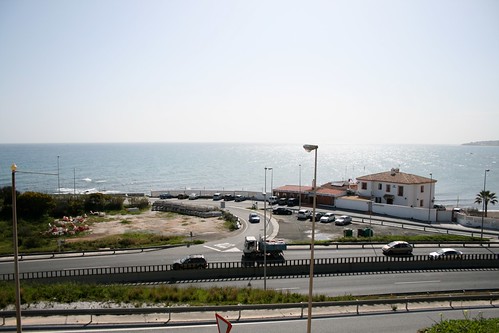1 .- Concept of Road
Roads are considered the means of public domain designed and built primarily for motor vehicles.
Classes of roads by ownership
[:]a) State
The state highways are built into a schedule of general interest or whose role in the transport system affects more than one region.
b) Autonomic
Regional roads are the rest of the public road, that is, those roads and highways whose itineraries are Integrated Development in the territory of an autonomous community. On these roads, regional governments have exclusive powers to regulate the planning, construction, maintenance and operation.
Likewise, the CAAC also have exclusive competence in relation to the regulation of trails, which are public property used or used for the transit of cattle and regulated by the Act of 1995 cattle trails.
c) Local
Along state highways, the 1974 Act governing provincial and local roads and in fact these entities are the owners of the roads constructed in accordance with their own plans and is competent to its preservation and creation.
The fact that a road runs partly why no urban land becomes urban roads and loses sutitularidad, although with the construction of ring roads and intercity traffic diversion if you acquire such a condition and delivered to the respective City Hall. Roads and rural roads are also municipally owned property and therefore its conservation.
Provincial ownership of the estate of road has no place as services supra.
2 .- Types of roads by their characteristics
By their nature, the roads are classified as freeways, highways, roads
and roads.
a) Highways: These are roads that are specially designed, constructed and marked as such for the exclusive movement of cars and meet the following characteristics:
a. Not having access to such adjacent properties.
b. Do not cross at any other track, road, railway or tramway line or be cross-path level, route of communication or any easement.
c. Consist of different roads for each direction of traffic, separated from each other except at special points or temporarily, by a dividing strip not intended for traffic or, exceptionally, by other means.
b) Highways: These are roads that do not meet all the requirements of the motorways have separate lanes for each direction of traffic and limited access to adjacent properties.
c) Other roads: roads are single carriageway and a total limitation of access to adjacent properties.
d) Conventional Roads are those which do not meet the characteristics of the highways, expressways and freeways.
e) Service Areas: areas adjacent to roads, designed specifically to house facilities and services intended to cover the needs of the movement, which may include fuel supply stations, hotels, restaurants, repair shops and similar services to facilitate the safety and convenience of road users. Functional elements of nature are state-owned land

